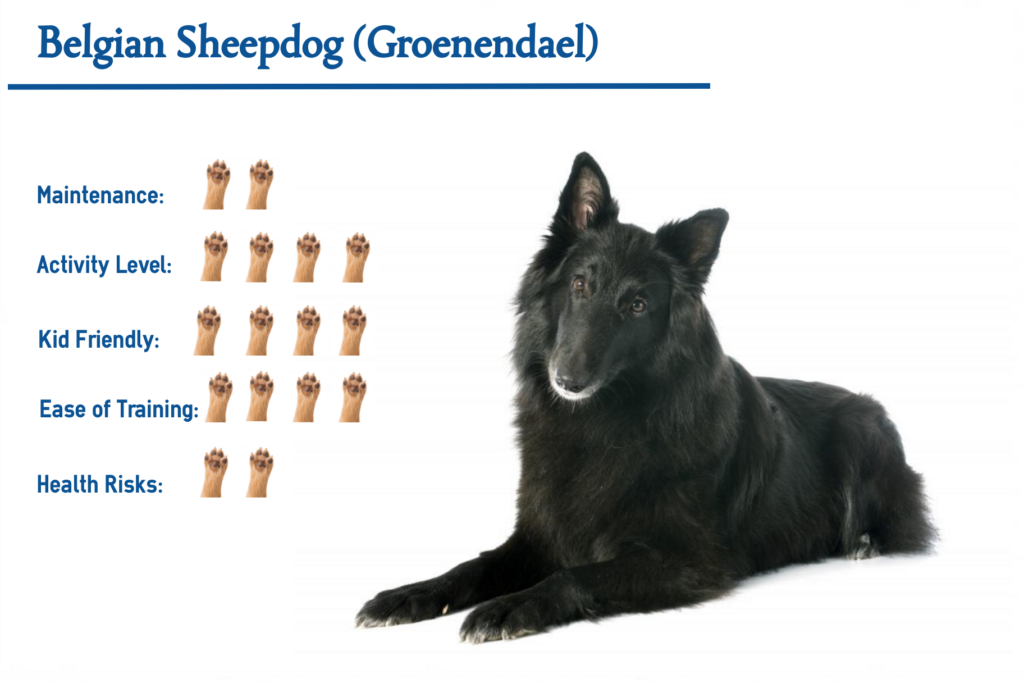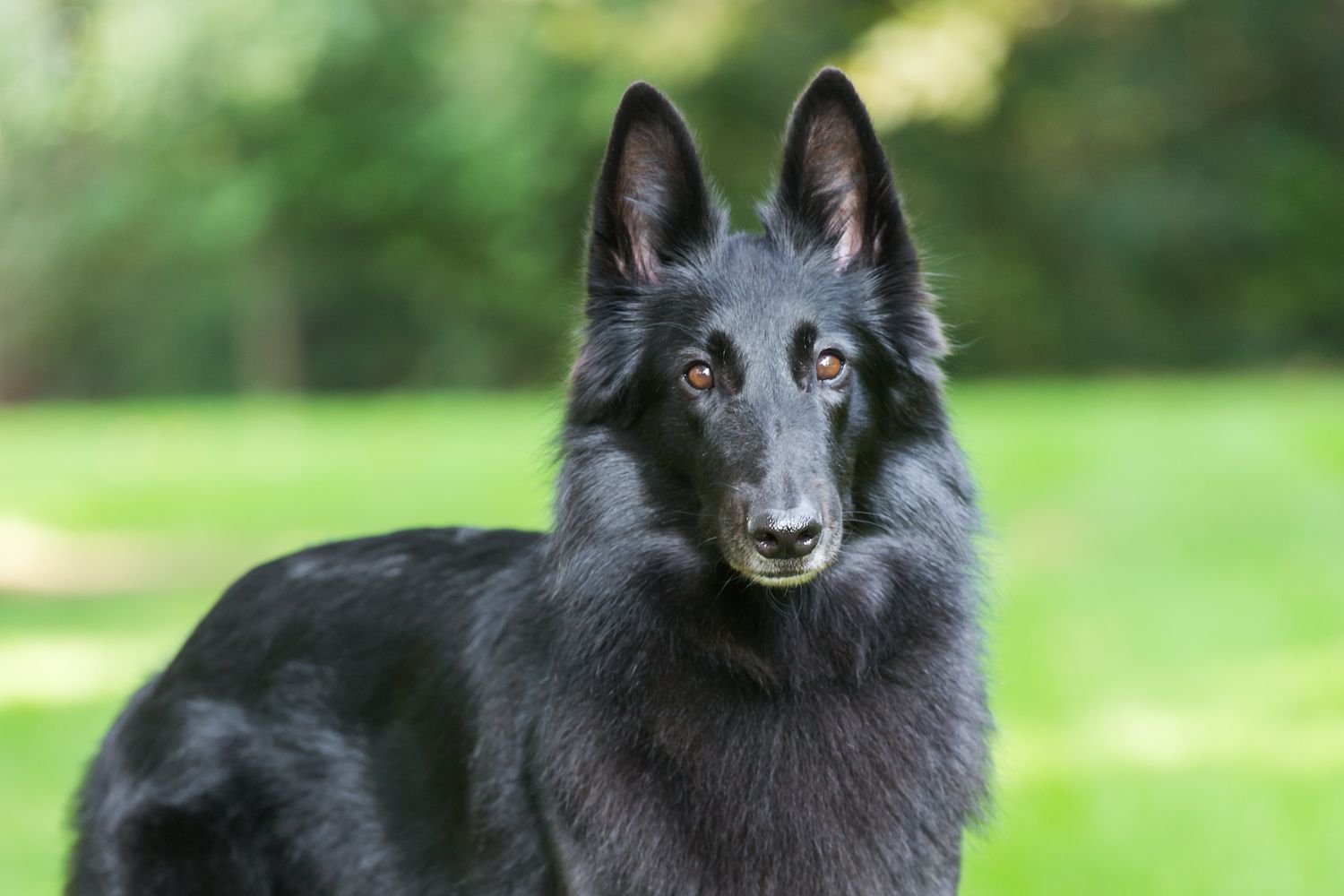The Belgian Shepherd (also known as the Belgian Sheepdog or the Chien de Berger Belge) is a breed of medium-sized herding dog from Belgium. While predominantly considered a single breed, it is bred in four distinct varieties based on coat type and colour.
- The long-haired black Groenendael
- The rough-haired fawn Laekenois
- The short-haired fawn Malinois
- The long-haired fawn Tervuren
in the United States the American Kennel Club considers the four varieties to be separate breeds.
The breed descends from a common type of shepherd dog found throughout Western Europe that includes such modern breeds as the Bouvier des Ardennes, Dutch Shepherd and German Shepherd. A common sight in the service of Belgian shepherds for centuries, it was not until the end of the 19th century that a breed club was formed and attempts were made to standardise the breed.
In addition to its historical role as a herding dog, Belgian Shepherds have been used as
- Assistance dogs
- Companion dogs
- Detection dogs
- Guard dogs
- Guide dogs
- Police dogs
- Search and rescue dogs.
The breed has a long history of being used by military forces, serving in both World Wars; they continue to beused by several militaries in a variety of roles to this day.
History

Belgian Shepherds descend from a common type of herding dog as similar Western European breeds like the Bouvier des Ardennes, Dutch Shepherd and German Shepherd Dog, and for centuries they were used by Belgian shepherds for this task. Unlike in other European countries where, throughout the 19th century, shepherd breeds were standardised and breeders made efforts to perpetuate their breeds, by the end of the century the Belgian Shepherd was becoming obsolete and was in danger of extinction. In 1891, the Club de Chien Berger Belge was formed to save the type and a team led by Professor Adolphe Reul of the Cureghem Veterinary School conducted a field survey of the type. As the Belgian Shepherd had for centuries been bred for working ability with little consideration given to form, Professor Reul found the type to vary greatly in appearance. As a part of their work, Professor Reul’s team assembled 117 specimens and began the process of standardising them into distinct varieties. Classifying them as a single breed, initially, Professor Reul’s team divided the breed into six different varieties based on coat type and colour; between 1892 when the first breed standard was drafted and 1956, as few as two varieties and as many as eight were recognised by either the Club de Chien Berger Belge or the Société Royale Saint-Hubert.
In 1905 it was decided that interbreeding between the different varieties should be forbidden, but the disruptions caused by the First World War resulted in a decline in breed numbers, so in 1920 it was decided matings between the varieties should be allowed to preserve the breed and avoid issues resulting from inbreeding. The Second World War once again threatened the viability of the breed and in late 1945, it was decided once again that matings between dogs of the different varieties were to be encouraged, and through careful breeding, the Belgian Shepherd recovered in numbers. In 1956 the current breed standard was adopted and it specified the four varieties known today; the Groenendael, Laekenois, Malinois and Tervuren.
The Groenendael variety is believed to have been created in 1885 by Nicholas Rose, owner of the Château de Groenendael. Rose owned a long-haired, black Belgian Shepherd bitch called “Petite”, liking her look so much he spent over a year searching for a suitable mate, eventually finding a dog named “Piccard D’Uccle” who belonged to a shepherd called Mr Beernaert, these two are considered the foundation stock of the variety. Their finest progeny were called “Duc de Groenendael” and “Baroness” who were mated widely to Belgian Shepherds of different appearances with the black progeny retained. Initially Rose had wanted to name the variety the “Rose”, but it was deemed this could cause confusion given their black colour so they were instead named after his château, Groenendael. During the First World War, Groenendaels were used by the Belgian Army to locate wounded soldiers and carry messages, their bravery was recognised by U.S. soldiers during the war and examples were imported to the U.S. in the following years; to this day in the US, the name Belgian Shepherd or Belgian Sheepdog is commonly used to refer to the Groenendael.
The Malinois variety was said to be the first variety to breed true to type and initially they became so well-known in Belgium that at one time the other varieties were collectively called “other-than-Malinois”, it was the Malinois that the other varieties were gauged against. The variety takes its name from the Malines region, where it was the predominant coat type used by the local shepherds.
The Laekenois variety has always been the rarest; they take their name from the Château de Laeken, a residence of the Belgian royal family. The Laekenois was a favourite of Queen Marie Henriette, who frequently watched them in the service of the shepherds who grazed the royal domains around the château; this patronage contributed to their popularity at the time. In addition to being used as herding dogs, rough-haired Belgian Shepherds were traditionally used as guard dogs in the regions surrounding Boom, guarding valuable linens put out to bleach in the sun.
The Tervuren variety is believed to have been created when a brewer, M. Corbeil, bred his fawn long-haired Belgian Shepherd pair “Tom” and “Poes”, one of their progeny was a long-haired fawn bitch named “Miss” who was purchased by an M. Deanhieux. Miss was bred with Duc de Groenendael, the foundation sire of the Groenendael variety, and the fawn progeny became the Tervuren variety who take their name from the region of Tervuren. The Tervuren variety is considered particularly robust and healthy and in Europe, several breeders use them to reinforce the bloodlines of other varieties, particularly the Groenendael.
